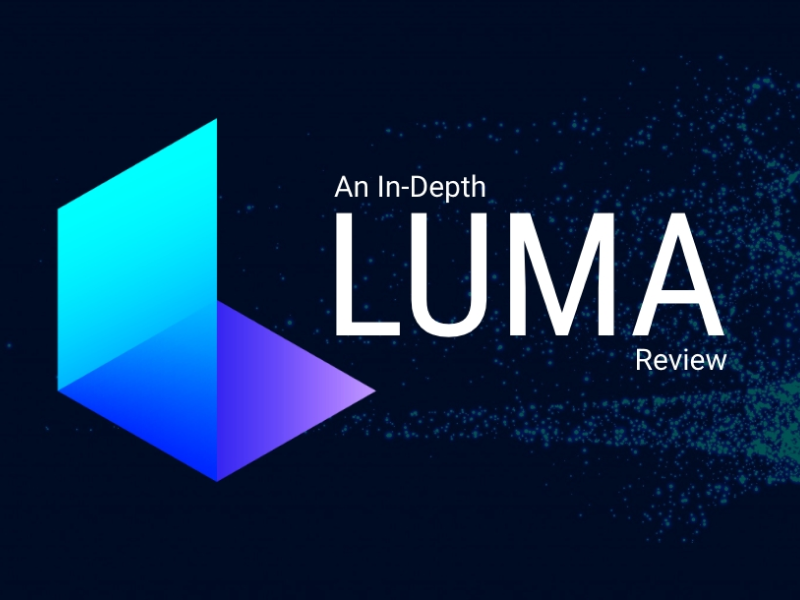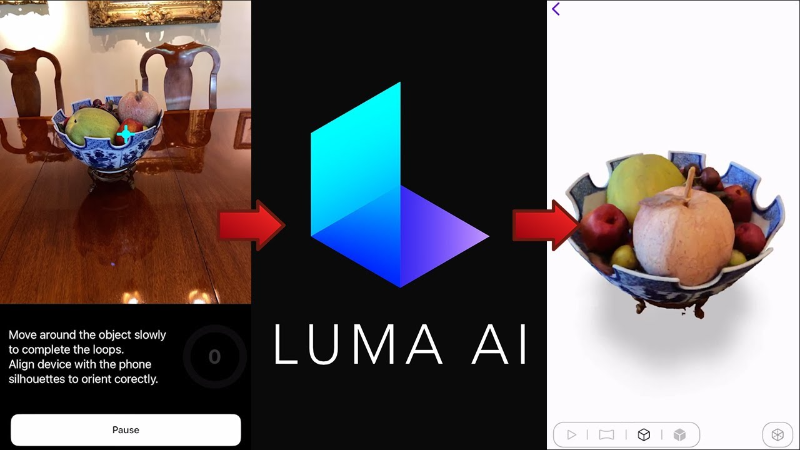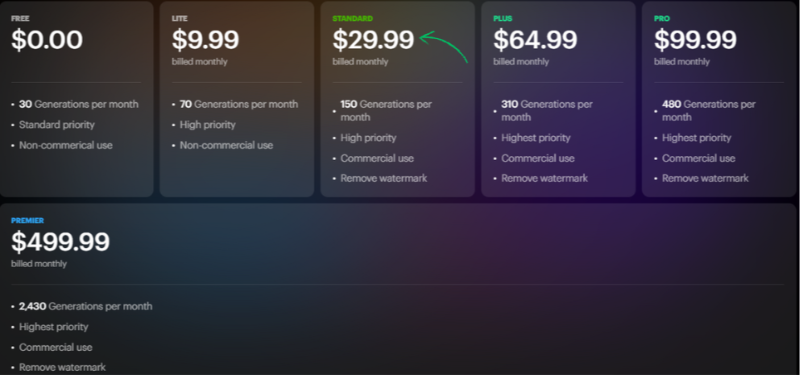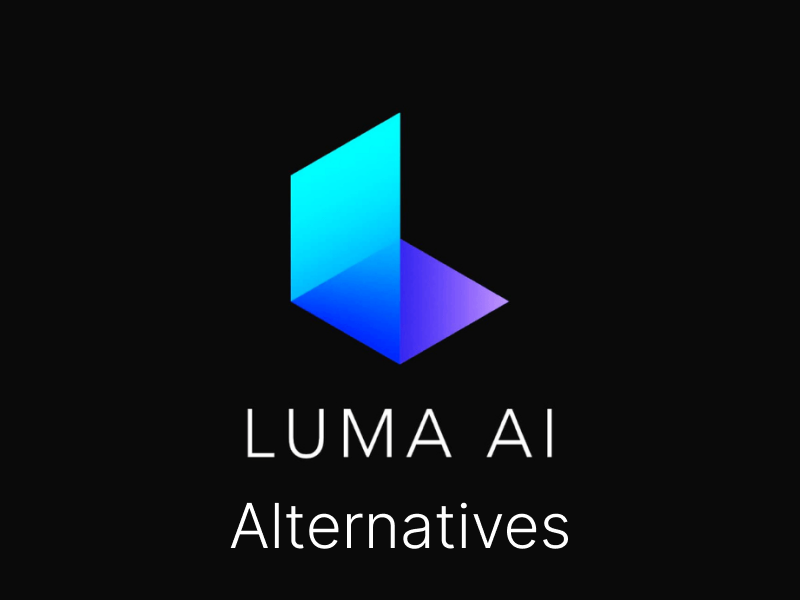
Table of Contents

High-quality product photography is crucial in today’s competitive market. Whether you’re showcasing your products online or creating immersive experiences for customers, professional-grade visuals are often the deciding factor. But traditional photoshoots—complete with extensive setups, professional photographers, and hours of editing—can quickly eat away your budget and resources.
Enter Luma AI, a platform designed to revolutionize the way businesses approach product photography. By leveraging AI-powered tools, including its standout Neural Radiance Fields (NeRF) technology, Luma AI promises stunning visuals, faster workflows, and accessibility even for beginners. Is Luma AI worth the hype? Let's explore.
Luma AI is an innovative platform designed to simplify and democratize the creation of 3D visual content for eCommerce, advertising, and more. Whether you’re working with product photography, 3D assets, or immersive virtual tours, Luma AI helps you achieve exceptional results without the need for expensive tools or extensive technical know-how. Its flagship product, Luma Labs, allows users to capture, edit, and export lifelike 3D models with nothing but a smartphone.
Besides Luma Labs, the company is developing other AI-driven tools, including an AI-powered assistant and advanced search functions aimed at enhancing creative workflows across industries.
Luma AI was co-founded by expert engineers and visionaries, including Dr. Albert Pumarola, a renowned researcher formerly focused on computer vision at MIT. The goal of the team? To make cutting-edge 3D content creation accessible to everyone—professionals and novices alike.
Rooted in sophisticated machine learning (ML) and computer vision technologies, Luma AI redefines standards for interactive digital art, gaming assets, and e-commerce visuals. Impressively, its proprietary NeRF technology makes hyper-realistic rendering attainable for diverse use cases, from small businesses to large-scale enterprises.

Luma AI redefines the landscape of product visualization and 3D content creation with its powerful combination of intuitive tools and groundbreaking AI technology. By delivering unmatched precision and innovation, it empowers creators to bring their ideas to life in ways that were once unimaginable. Let's talk about the key benefits one by one.
Luma AI revolutionizes product visualization with its ability to capture lifelike 3D models using just your smartphone. By leveraging advanced AI algorithms, the platform makes it easy to reconstruct objects with stunning detail and precision, eliminating the need for expensive equipment or technical expertise. This means anyone can create professional-grade content, guided by the app’s optimized capture process.
The platform’s NeRF (Neural Radiance Fields) technology sets a new benchmark in realism for 3D environments. By capturing intricate details, lighting effects, and reflections, NeRFs enable the creation of immersive 3D scenes that feel incredibly lifelike. This opens up exciting opportunities for virtual tours, product showcases, and beyond.
Luma AI empowers you to take full control over your creations with intuitive editing tools. You can refine your 3D visuals by removing backgrounds, adjusting lighting, and modifying materials to achieve your desired look. These powerful features allow creators to enhance their content without requiring advanced editing skills.
Designed with flexibility in mind, Luma AI provides seamless export options for developers. You can export your 3D assets in formats like USDZ, glTF, and OBJ, making it easy to integrate them into various 3D software, gaming engines, or even virtual reality applications. The platform also extends its functionality to Unreal Engine with a dedicated plugin, enabling real-time rendering and interactive experiences.
Luma AI simplifies 3D content creation with an intuitive interface that caters to all users, regardless of expertise. Its user-friendly design ensures that creating high-quality 3D visuals feels accessible and straightforward. Additionally, the vibrant Luma AI community, hosted on platforms like Discord, offers support and inspiration for newcomers and seasoned users alike.
Finally, Luma AI makes trying the platform risk-free with its free tier. This entry-level option allows users to explore its capabilities and decide if the tool fits their needs before committing to a subscription. Combined with transparent updates and accessible information through its website and social channels, Luma AI ensures an inclusive experience for anyone looking to elevate their 3D content creation.

Luma AI offers tiered pricing to suit various user needs, from hobbyists to professionals.
| Plan | Price | Features |
| Free Tier | $0 month |
30 generations per month Basic editing tools |
| Standard Plan | $29.99/month |
30+150 generations per month Access to advanced editing tools |
| Pro Plan | $99.99/month | Expanded editing and advanced tools |
| Premier Plan | $499.99/month |
30+2,030 generations per month Premium support and top-tier features |
| Pros | Cons |
| Unmatched realism: Luma’s NeRF technology creates stunningly lifelike 3D models. | Limited free features: The free tier offers only basic functionalities. |
| Ease of use: Designed for users with minimal technical experience. | Learning curve: Mastering all features requires time and practice. |
| Cost-effective: Streamlines workflows, reducing dependency on expensive photo shoots. | Hardware needs: Better performance requires a capable device. |
| Flexible exports: Easily integrates into a variety of 3D design and eCommerce platforms. | High-tier pricing: Premium plans may be costly for small-scale businesses. |
| Supportive community: Active Discord space for sharing tips and troubleshooting. |
Also Read: Luma AI vs Pika: Which AI Video Tool is Right for You? >>
Luma AI is perfect for several user categories:
Step 1: Download the App
Install Luma AI on your device (currently available for iOS users only).
Step 2: Capture the Object
Use your phone to capture your product or scene from various angles following the on-screen guidance.
Step 3: Review the Model
Luma will generate a 3D replica. Use its editing tools to refine lighting, backgrounds, or textures.
Step 4: Export the File
Choose the desired format for easy integration into your workflow.
Also Read: How to Use Luma AI: A Beginner's Journey into 3D Creation >>

When exploring 3D capture and visualization tools, Luma AI impresses with its innovative features, but there are other notable options in the market that cater to different use cases and preferences. Here are some compelling alternatives to consider, each with its unique strengths:
Polycam is a versatile 3D capture app designed for iOS devices, making it particularly accessible for Apple users. It specializes in photogrammetry, a process that creates detailed 3D models by analyzing photographs of objects or environments taken from multiple angles. One of Polycam’s biggest strengths is its balance between ease of use and detailed output, appealing to both hobbyists and industry professionals. The app offers offline processing, allowing users to create models even without an internet connection. Whether you're scanning smaller objects for creative projects or mapping out spaces for design purposes, Polycam delivers reliable results with minimal setup.
RealityCapture stands out as a robust and comprehensive photogrammetry software tailored for handling large datasets. This makes it ideal for industries requiring precision and scalability, such as architecture, engineering, and cultural heritage documentation. What sets RealityCapture apart is its speed and ability to process extensive collections of photo and laser scan data into incredibly accurate 3D models. Whether you're working on complex building designs, preserving historical sites, or managing engineering projects, RealityCapture ensures high-quality results with an advanced feature set that caters to detail-oriented professionals.
Metashape, created by Agisoft, is a feature-rich photogrammetry software that caters to a wide variety of applications. Known for its ability to process aerial drone imagery, Metashape excels in 3D reconstruction and geospatial analysis, making it a favored choice for tasks like aerial mapping, topography studies, and surveying. It offers advanced options for texture mapping, dense cloud generation, and DEM (digital elevation model) creation, serving professionals in industries like agriculture, urban planning, and environmental research. Metashape’s broad range of tools provides the flexibility to tackle projects of any complexity, ensuring it remains a top choice for those needing precision and functionality.
By understanding the capabilities of Polycam, RealityCapture, and Metashape, you can assess which tool aligns best with your specific 3D capture and visualization needs. Each platform brings distinct value to the table, offering alternatives that cater to creative, industrial, and technical domains alike. Whether you're a beginner or an expert in the field, these tools expand your options for bringing your 3D visions to life.
Also Read: Top 8 Luma AI Alternatives for This Year (Free & Paid Options) >>
1. What devices are compatible with Luma AI?
Currently, Luma AI supports iOS devices (iPhone 11 or newer). A web version for additional editing is also available.
2. Can I use Luma AI for business purposes?
Absolutely! Luma AI offers commercial licensing for eCommerce, advertising, and creative industries.
3. How does Luma AI compare to traditional 3D scanning?
Luma AI is often faster, more affordable, and more accessible than traditional 3D scanning solutions. Its NeRF technology also ensures unmatched realism.
Luma AI is an exciting innovation for product photography and 3D modeling. Its intuitive design, NeRF technology, and robust editing tools make it an essential tool for businesses and creatives. While its free tier provides a great introduction, unlocking its full potential lies in upgrading to one of the paid plans.
Ready to revolutionize your product visuals? Head to Luma AI's website today and experience the future of 3D content creation.